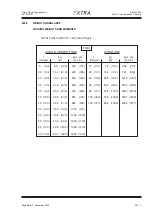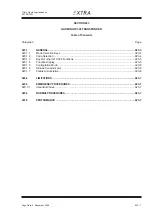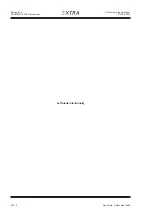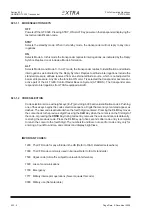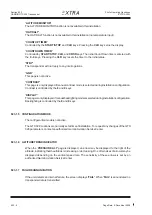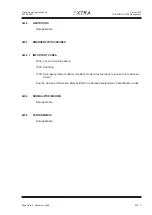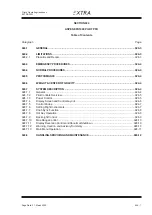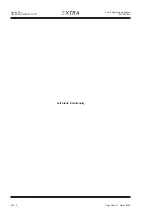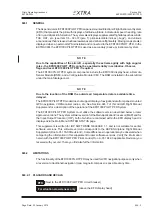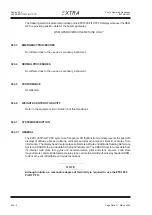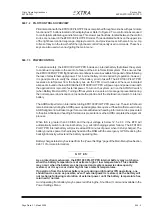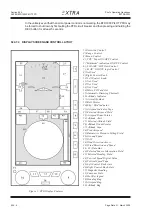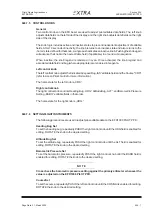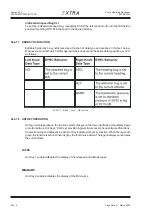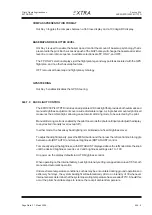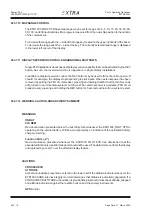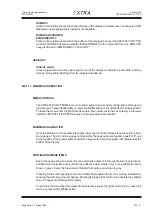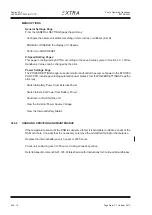
Section 924
ASPEN EFD1000 PILOT PFD
Page Date: 31. March 2009
924 - 5
Pilot´s Operating Handbook
EXTRA 300L
924.7.2
PILOT CONTROLS OVERVIEW
Pilot interaction with the EFD1000 PILOT PFD is accomplished through two knobs with push/rotate
function and 11 buttons located on the display bezel. Refer to Figure 2. Two control knobs are used
to control pilot settable bugs and references. Three lower push buttons, located between the control
knobs, are not used in the EFD1000 PILOT PFD model. Three dedicated buttons on the upper side
of the right bezel control map range, display reversion, and provide access to the main menu. Up
to five soft keys on the lower half of the right bezel control frequently used commands. These five
keys are also used when navigating the main menu.
924.7.3
POWER CONTROL
To enhance safety, the EFD1000 PILOT PFD includes an internal battery that allows the system
to continue to operate in the event of a failure of the aircraft electrical system. This ensures that
the EFD1000 PILOT PFD flight instrument continues to remain available for a period of time following
the loss of all external supply power. This internal battery is not required by regulation; however,
it is good practice to verify the status of the battery prior to takeoff. The EFD1000 PILOT PFD
receives aircraft power from the battery bus via the PFD circuit breaker. Whenever indicated
airspeed is invalid or below 30 KIAS the EFD1000 PILOT PFD will power up and power down with
the application or removal of external power. To turn on the system, turn on the AVIONIC switch
(when Battery Master is ON). Turning off the system is vice versa. A message is presented during
the normal power down sequence to enable the pilot to abort the shutdown and switch to internal
battery.
The AHRS will perform an internal test during EFD1000 PILOT PFD power up. The aircraft should
remain stationary during the AHRS power up and alignment sequence. If the aircraft is moved during
AHRS alignment it will take longer for accurate attitude and heading information to be presented
to the pilot. Attitude and heading information is presented once the AHRS completes the alignment
process.
When IAS is greater than 30 KIAS and the input voltage is below 12.5 ± 0.3 V the EFD will
automatically switch to its internal battery (e.g. aircraft charging system failure). The EFD1000
PILOT PFD internal battery will provide at least 30 minutes of power when it is fully charged. The
battery provides power to the display head and the RSM with the emergency GPS. Reducing the
backlight intensity will extend the battery operating time.
Battery charge status may be viewed from the „Power Settings“ page of the Main Menu (See Section
924.7.13 for more information).
N O T E S:
As a protection mechanism, the EFD1000 PILOT PFD internal battery may not charge
when the battery temperature is at extreme high or low temperatures. This situation
may occur when the battery was being used and system power is subsequently
restored, or it may occur under high or low ambient temperatures.
If operation from the internal battery occurs during night and/or IFR operations, one
should land as soon as possible, even if external power is restored, as the battery will
not recharge following restoration of external power until the battery temperature has
returned to normal.
A unit operating from battery may be powered off using the „Shut Down“ command available in the
Power Settings Menu.
Summary of Contents for 300L
Page 2: ...Left blank intentionally ...

